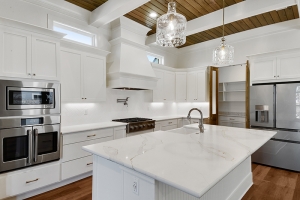
|
ReplyForward
|

|
ReplyForward
|
The housing crash of 2008 was a devastation to the U.S. housing market. Currently, the economy is slightly taking a negative turn. The slowdown in the U.S. economy is having many homeowners concerned with the state of the market. Fortunately, data reveals that today’s slowdown is nothing like the crash in 2008. One of the biggest factors for it not to crash down is the low inventory supply which comes from current homeowners putting their homes on the market, newly built homes being listed, and short sales or foreclosures. 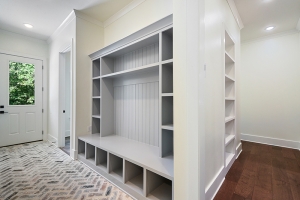
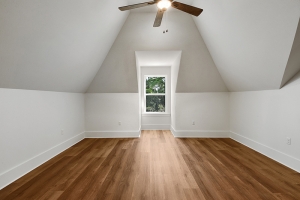
What is causing more buyers in the current housing market?
The competition between buyers is slowing causing an increase in buyer activity.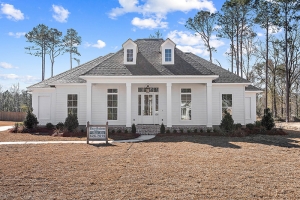
In the second quarter of 2022 there was a increase to 49% in the share of prospective home buyers who are actively seeking a home to purchase. This comes after a decline for three straight quarters in a row. Rising interest rates have pushed many prospective home buyers righ tout of the market.
According to the NAHB’s Housing Trends Report each region saw a different share of prospective home buyers who are actively searching for a home to purchase. The South was the only region that did not see a rise. As for the remaining three, the Northeast went from 50% in the first quarter to 54% in the second quarter, the Midwest went from 40% in the first quarter to 51% in the second quarter and the West saw an increase of 57% in the second quarter from the 46% that was reported in Quarter one.
The housing market has also seen a rise in availability expextations. We have seen a fall for the last five consecutive quarters so this is good news as it grew from 17% to 22% between the first and second quarter of this year. Along with availability expectations affordability expectations also increased. This has been the first increase since 2020 going from 19% to 23% from the first quarter to the second quarter.
When was the last strong growth increase in single-family starts?
The last fast pace of single-family starts grew in 2021 which is the fist time an increase had occured since 2013. 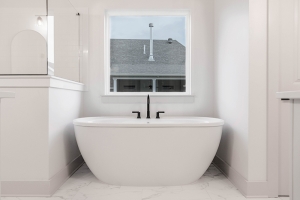
According to the NAHB’s Eye on Housing New single-family starts grew exponentially in 2021. In fact this is the fist time since 2013 there has been such a fast pace in single-family new home starts. NAHB’s Survey of Construction (SOC) reported 1,133,145 new single-family were started in 2021. This is 14% higher than reported in 2020.
The South Atlantic, West South Centeral and Mountain Divisions saw the most new single-family units starts which represented 20 states plus Washington DC. This accounted for 41% of the country and over two-thirds of the total new single-family housing starts in 2021. The Pacific Division increased to 106,240 accounting for 9% and the East North Central Division went to 93,693 accounting for 8%.
The other divisions including East South Central, West North Central, Middle Atlantic and New England made up the remaining 16%. Four of the division grew faster than the national level which were the Middle Atlantic with a 26% increase, the East South Central Division with a 23% increas ehte West South Central Division with a 19% increase.
Click Here For the Source of the Information.
What are some things you should know about when building a custom home?
How to Pay for a Custom Home
What You’re Paying For
Finding the Right Contractor for Your Custom Home
Designing and Building the House
There are many in the housing market that would rather build a home than purchase a new construction home that has already been built. When you build a home you have all the say from start to finish. There are some things you need to know when building a home. Here are some of them that professionals say are important to know.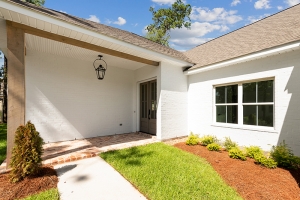
If you are in the market to build a custom home, then you will probably be using a construction loan. This type of loan is a short-term loan that will cover all of your expenses while you are building your home. It is a bit lengthier and stricter than a regular mortgage but is perfect for a custom home build. Many people choose to do a construction to permanent loan. Once your home is built and ready to occupy, your loan turns into a standard mortgage loan. Remember that a construction loan is typically only for 12 – 18 months and the payment process is different from a standard mortgage loan.
Remember there will always be extra expenses when building a custom home. These include plumbing, electrical wiring, lighting, internet configuration, and media hookups. There will also be many different industry professionals who you will also need to pay including plumbers, electricians, city inspectors, land surveyors and structural engineers. All this aside, your builder or contractor will reach out and coordinate with all of the suppliers and laborers.
Another cost that you might incur is by using an architect. If you need to have help with the design of your home, then you will need to hire one. If you do not want to choose a stock plan, then this will be the route you need to go.
This is very important because they not only need to be a professional in the industry but also need to work with your personality. Choosing the right contractor or builder will make all the difference. To go about choosing one, first, start with word of mouth. A first-hand account is always the best. Before making your decision, interview several different contractors. Keep in mind that you will want them to be able to meet your timeline, agree with your vision and have a positive attitude about your design. As with any other interview, check references, read business reviews and google their name to see what comes up.
This will take a good bit of time because your contractor will want to meet with you for several preconstruction meetings. Remember during these meetings to take notes, keep records and pay attention. This way you will be able to reference the plans that were agreed upon. Put the budget in your forethought as you go through your planning stages. It is very easy to get carried away and spend much more if you do not keep track. Always keep in mind if what you plan is good for resale. This can also affect your decisions. Even though it is a long and tedious process, at the end you will have your dream home.
Will a new subdivision, proposed to be built along Interstate 12 and Jessikat Lane, be accepted by local residents?
A new subdivision of close to one hundred homes is set to be built in Madisonville and will be part of a development of 450 existing homes. Although there has been some opposition from residents in the area, the St. Tammany Parish Zoning Commission approved the groundwork with a vote 6-4 to rezone a part of the land from commercial to residential.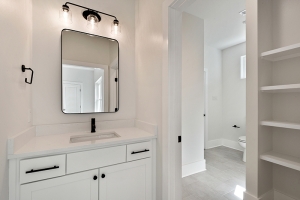
A new subdivision of close to one hundred homes is set to be built in Madisonville and will be part of a development of 450 existing homes. Although there has been some opposition from residents in the area, the St. Tammany Parish Zoning Commission approved the groundwork with a vote 6-4 to rezone a part of the land from commercial to residential.
The new homes will be built on 19 acres of undeveloped land close to Interstate 12 and Jessikat Lane that recently changed from being zone commercial to residential and 33 acres that are already zone residential. The land is owned by local home developer Paul LaGrange and is under contract to be purchased by Andrew Cahanin with DSLD Homes.
“Had the zoning not changed, the amount of traffic could have been extremely detrimental to the surrounding area. Generally, residential uses generate much less traffic than commercial in a more predictable pattern,” according to commissioner Patrick Fitzmorris.
Residents in the area are concerned because fifty of the existing homes and the new development will share a single access road to get in and out.
“When I look at this piece of property, it needs new access. It’s one way in and out. It’s completely unsatisfactory,” said commissioner Kenneth Ress.
DSDL says this will not be the case. The new home development will not be as dense as the other developments surrounding it. There will be only two homes per acre. There will be a plan to improve Jessikat Lane which is currently a gravel road that runs along the edge of what will be the new development and make it an access point to the new homes.
Residents do not agree because of the traffic backups already that are a hassle on a daily basis. The backups are caused by the narrow roads. Along with the bad traffic flow, flooding and drainage issues are also a battle. The boost in population will just add to both of these issues.
“This area is basically land-locked. Rex (Avenue) is maxxed out. I’ve been on it. And I dodged the kids and the very deep ditches on both sides. It’s a difficult decision at this point, because the access is just not appropriate for any development at this time,” replies commissioner Nelwyn McInnis.
DSLD’s attorney Paul Mayronne says that the rezoning is just the first step in the process. There will be a traffic study and a hydrological analysis.
“You don’t build a project until you can demonstrate the traffic and drainage will be appropriately handled,” he said. “We believe we can do that, but we can’t prove it until the zoning change.
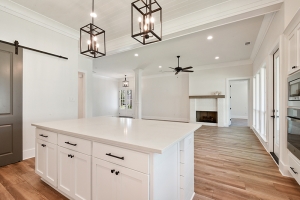 According to the data found in the Consumer Expenditure Survey (CES) data from the Bureau of Labor Statistics (BLS), the National Association of Home Builders says that new home buyers and existing home buyers spend thousands of dollars or more on in the first year of owning a home on appliances, furnishings and remodeling. This estimate is derived from the pre-pandemic (2017 – 2019) data collected.
According to the data found in the Consumer Expenditure Survey (CES) data from the Bureau of Labor Statistics (BLS), the National Association of Home Builders says that new home buyers and existing home buyers spend thousands of dollars or more on in the first year of owning a home on appliances, furnishings and remodeling. This estimate is derived from the pre-pandemic (2017 – 2019) data collected.
NAHB’s report found that during the first year after the purchase of a new construction home, a homeowner will spend on average over $9,250 on their home over a non-moving home owner, and those that purchased an existing home spent around $5,240 over non-moving homeowners. This shows that a home purchase causes an increase in spending. These expenditures are mostly on things like appliances, furnishings, and remodeling.
New home buyers also spend a lot more on property alterations and repairs. A typical new home buyer is estimated to spend almost twice as much on these projects ($9,288) compared to a similar household that stays put in a house they already own. When looking closer, the study showed that these expenses were from building outdoor features such as a pool, patio, fences, and landscaping.
When someone moves into a new home, they also want to have some new furnishings. This also triggers bigger spending. It is estimated that a new home buyer spends around $3,000 or more on furnishings during the first year of owning a home and $1,870 on appliances.
If a new home buyer purchases an older home, this price can go up even more. It is estimated that they tend to spend around $5,238 more on remodeling, furnishings and appliances. The majority of the spending is on property repairs, alterations and remodeling projects. Homeowners that do not move will spend around $4,282 in a year on home projects while those that buy existing homes will spend around $7,400 during the first year after closing. The data shows that home buying does spark additional spending.
New Orleans has a great film production industry so it is no wonder People Who Think, a Mandeville-based advertising agency, is creating a new post-production company. The agency is headed by Republican strategist Jay Connaughton and will call the spin-off production company Cadence Post.
Cadence Post, the new company, has four employees and expects the number to double over the next year. The company is currently run by Rick Nelson.
“The sheer amount of work that has come back to the city in the last two years is outstanding,” Nelson said. “But there hasn’t been a lot of growth on the post-production side of things so we need to respond by building out that infrastructure.”
Currently, Film New Orleans has 11 television and movie productions that will be filmed now through mid-September. This number includes “Queen Sugar” and “Heart of a Lion.” Right now, the film promotion agency will send their raw footage back to Los Angeles or Atlanta to a more traditional filmmaking center. Nelson wants to fill this gap. These can include daily management and “sling shot” services, partnering with Los Angeles or New York as their on-the-ground entity while they’re shooting locally.
Their advertising agency has worked with big brand name campaigns for Coca-Cola, Mellow Mushroom, Welch’s Snack Foods and Chevron. Currently, they are working on an advertising campaign for Rev Broadband and have worked on programs for Outdoor Channel and Lifetime in the past.
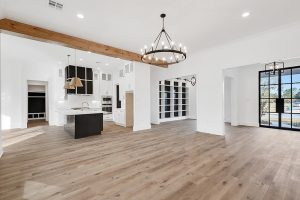 The hot housing market has changed many things and one thing lenders want to see is appraisal modernization. According to a survey published in May by Fannie Mae, found that mortgage lenders see value in appraisal modernization, specifically in the implementation of non-traditional appraisals and inspection-based appraisal waivers. This was based on a survey conducted on senior mortgage executives. The survey concluded that 188 out of 200 (94%) feel that appraisal modernization will help reduce the loan origination cycle time.
The hot housing market has changed many things and one thing lenders want to see is appraisal modernization. According to a survey published in May by Fannie Mae, found that mortgage lenders see value in appraisal modernization, specifically in the implementation of non-traditional appraisals and inspection-based appraisal waivers. This was based on a survey conducted on senior mortgage executives. The survey concluded that 188 out of 200 (94%) feel that appraisal modernization will help reduce the loan origination cycle time.
The appraisal process time is one of the biggest obstacles the mortgage industry is facing. Right now, it is causing huge delays and higher costs. There are also fewer appraisers who are experienced in understanding more complex collateral assignments. Currently, the appraisers cannot get to all the houses that need to be appraised. Appraisal costs are going up due to the impact this has on the industry. The modernization will also amplify appraisal capacity and lower borrowing costs.
The survey also shed light on some other issues that are even more important for the lending industry. A digital portal for consumer loan applications was number one or two on many lenders’ lists. There were also concerns mentioned about roadblocks that challenged adapting new modernization tools. These were speed or lack of speed, of integrating these tools with loan originating systems.
The pandemic also has played a hand in the issues the industry is facing when it comes to appraisals. Hybrid appraisals are now allowed under the FHFA (Federal Housing Financing Agency). Appraisers can now conduct them remotely using public records (tax appraisals and listings) for purchase loans. HUD (Department of Housing and Urban Development) extended its timeline on using hybrid appraisals because of the impact from the pandemic.